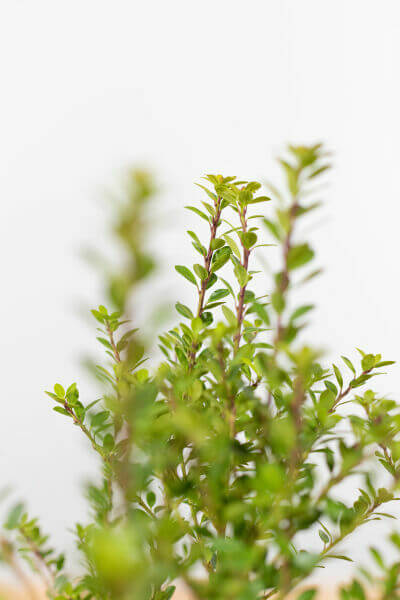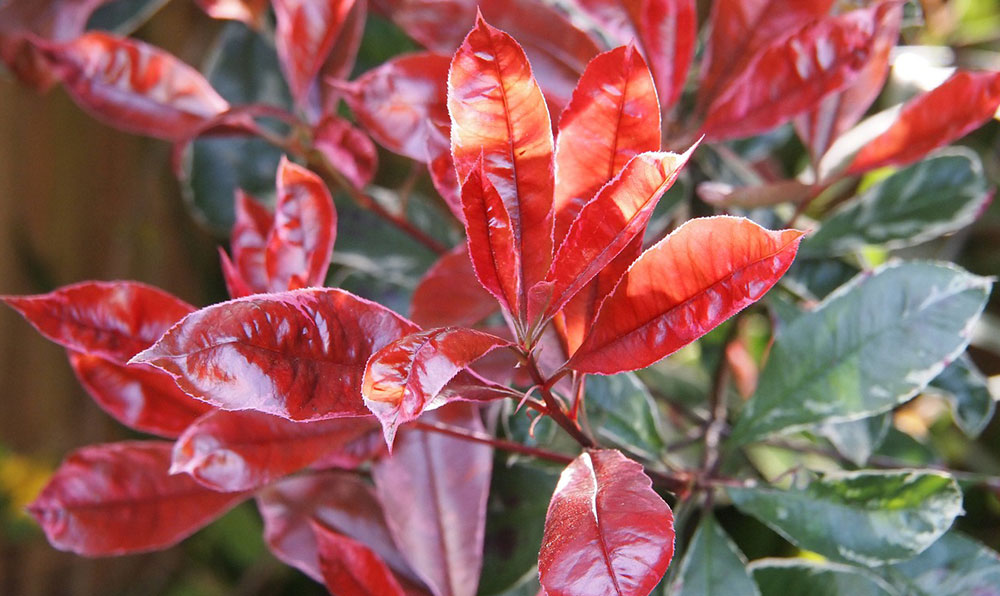Best Hedging Plants For Warm Climates
Best Hedging Plants For Warm Climates
Blog Article
Best Hedge Plants For Busy Roads
Boost your garden's allure with lush hedge ranges such as Yew (Taxus), Thuja, Laurel, Photinia, and Bamboo, commemorated for their structural stability and environmental benefits.
Yew and Thuja provide evergreen coverage and winter season strength, while Laurel offers fast development and broad, fragrant leaves.
Photinia adds seasonal beauty with its vibrant red foliage, and Bamboo lends a low-maintenance, tranquil atmosphere.
These hedges improve air quality, minimize noise, and produce tranquil, personal areas.
Proper planting, spacing, and maintenance guarantee energetic development and environmental consistency.
Check out how these lush ranges can elevate your garden's charm and wellness.
Secret Takeaways
Transform Your Garden With Lush Hedge Varieties
- Select Yew for its thick, evergreen development and exceptional durability.
- Choose Laurel for its fast development and broad leaves, ensuring fast personal privacy.
- Choose Photinia for its dynamic seasonal foliage, which turns a striking dark red.
- Use Bamboo for a low-maintenance, winter-hardy hedge with aesthetic appeal.
- Space plants 2-3 per meter and prune frequently for optimal growth and health.
Popular Hedge Plants
When transforming a garden with lush hedge varieties, it's vital to consider popular hedge plants such as Yew, Thuja, Laurel, and Photinia due to their distinct qualities and benefits.
Yew (Taxus) is highly esteemed for its longevity and dense, green growth, making it a prime option for enduring landscapes.
Thuja is noted for its evergreen foliage and robust winter season strength.
Photinia includes seasonal vibrancy with red leaves that darken with time, developing vibrant visual appeal.
Laurel provides fast growth and fragrant, broad leaves, ideal for fast personal privacy.
Furthermore, Bamboo is an outstanding choice for ambiance, offering a low-maintenance, winter-hardy alternative that boosts the garden's visual with its stylish, swaying canes.
These selections deal with a range of horticultural needs and choices.
Benefits of Garden Hedges
Garden hedges provide a multitude of advantages, making them an important addition to any landscape. These natural barriers are affordable to implement and supply considerable wind protection, boosting air flow and contributing to sound reduction. The thick foliage of hedges like Thuja and Beech guarantees personal privacy by obstructing visibility, producing a serene and remote environment.
Hedges also play an important role in microclimate policy, supplying a stable environment that cultivates plant growth and decreases temperature changes. Their intricate leaf structures filter contaminants, enhancing air quality and adding to a healthier garden environment.
Moreover, hedges master sound reduction, taking in and deflecting acoustic waves to lower ambient noise levels. This dual functionality of supplying both visual and acoustic privacy boosts the total serenity and aesthetic appeal of any garden.
Planting and Maintenance Tips
For a successful hedge, precise preparation of the planting location is important. Make sure the soil has correct pH and drainage to support strong root development.
Space the plants appropriately for the selected species. Water the hedge often throughout its preliminary development stage, changing as required with seasonal modifications.
Carry out a organized bug control and disease avoidance method, using chemical or natural treatments when necessary. Routinely check for aphids, mites, and fungal infections.
Apply mulch to keep wetness and reduce weeds. Seasonal pruning promotes thick growth and air circulation, important for plant health.
Following these guidelines will assist you cultivate a lively, properly maintained hedge that enhances the beauty of your garden.
Spacing and Trimming Guidelines
Spacing and Trimming Guidelines
Appropriate spacing and trimming are important for cultivating healthy, aesthetically appealing hedges. Sufficient spacing makes sure each plant gets enough nutrients, light, and air flow.
Follow these standards for ideal hedge upkeep:
- Spacing: Position hedge plants 2-3 plants per meter to motivate robust development.
- Pruning Methods: Routine pruning is vital for preserving preferred hedge height and shape. Trim new development in summer season and cut down older wood throughout winter season.
- Seasonal Care: Adjust trimming schedules and methods according to seasonal requirements to guarantee plant health.
- Hedge Height: Routinely display and cut to keep the desired hedge height and attain consistent aesthetics.
Following these steps will ensure your hedge flourishes, enhancing both the appeal and performance of your garden.
Picking the Right Hedge
Selecting the Right Hedge
Selecting the appropriate hedge involves evaluating aspects such as mature height, foliage density, and ecological durability. Effective hedge plant selection requires understanding each species' development qualities and site-specific flexibility.
For instance, Yew (Taxus) provides exceptional longevity and dense development, while Thuja is notable for its winter strength. Additionally, considering maintenance requirements is important; fast-growing types like Laurel or Privet demand regular trimming, whereas low-maintenance choices like Bamboo or Ivy may be more effective for those looking for very little maintenance.
Environmental elements such as soil type, light accessibility, and wetness conditions should also guide the selection procedure. This careful approach ensures the chosen hedges will flourish, providing both aesthetic and functional benefits to the garden landscape.
Delivery and Planting Guidance
To ensure your hedge plants flourish, they should be delivered by specialized carriers and planted without delay upon arrival.
Follow these important actions for effective planting:
- Soil Preparation: Enrich the soil with raw material to enhance drainage and nutrient material.
- Planting Depth: Develop a trench twice the width and equal to the depth of the root ball.
- Watering Strategies: Water thoroughly after planting, keeping the soil consistently damp however not saturated.
- Mulching: Apply a layer of mulch to keep wetness and reduce weeds.
Customer Support and Service
Given the vital role of timely support in horticultural pursuits, our client assistance team is available 6 days a week through telephone, email, and social networks to provide expert recommendations and promptly resolve any issues. Their commitment to quick action times guarantees consumer complete satisfaction by fixing questions associated with plant health, optimum planting methods, and maintenance schedules.

Reaction Time
Within 24 hours
Within 24 hr
This comprehensive support system, strengthened by an excellent 9.3/ 10 customer rating, highlights our commitment to boosting the gardening experience for every client.
Regularly Asked Concerns
How Long Does It Take for Hedge Plants to Establish?
Hedge plants normally require one to three years to end up being completely developed, with the precise period differing by types and growing conditions.
Efficient care throughout this vital period is important for robust growth. Consistent watering, vigilant weed control, and suitable fertilizer application are essential in promoting strong root advancement.
For example, fast-growing types like Laurel might develop more rapidly, while slower-growing ranges such as Yew may take longer. Persistent maintenance accelerates the establishment procedure, leading to thick and healthy hedges.
What Are the Best Hedge Plants for Privacy?
The concern of the very best hedge plants for privacy includes examining evergreen and deciduous choices.
Evergreen hedges like Thuja, Laurel, and Cypress offer year-round coverage, making sure constant privacy.
In contrast, deciduous hedges such as Beech use seasonal privacy, shedding leaves in colder months.
Secret upkeep suggestions for personal privacy hedges consist of regular cutting, fertilizing in spring, and appropriate spacing-- generally 2 to 3 plants per meter.
Additionally, constant watering and persistent weed elimination are important for promoting healthy, dense development.
Can Hedge Plants Draw In Wildlife to My Garden?
Yes, hedge plants can attract wildlife to your garden by offering important advantages like shelter, food, and nesting sites, thus boosting local biodiversity. Yew, holly, and laurel are exceptional for drawing in birds, while ivy supports a variety of insects.
Nevertheless, it's important to keep in mind that there are some drawbacks, such as increased upkeep to manage bugs and regular maintenance. Thoroughly choosing and keeping hedge varieties can assist stabilize these advantages and drawbacks, ultimately promoting a sustainable and vibrant community in your garden.
Exist Any Flowering Hedge Plants Available?
Yes, there are flowering hedge plants offered that can boost the beauty of your garden.
For example, Elaeagnus, likewise referred to as Olive Willow, produces fragrant white flowers in the fall, adding a touch of beauty.
Photinia, another popular option, showcases vibrant red leaves that mature into a rich green, producing a vibrant visual result throughout the seasons.
To ensure these plants flourish, it's necessary to practice correct pruning strategies and seasonal maintenance, such as trimming new growth in the summertime and cutting down in the winter.
These measures will help preserve the health and visual appeal of your blooming hedges.
How Do I Avoid Bugs in My Hedge Plants?
To avoid bugs in hedge plants, use natural pest control methods and maintain proper hedge care. Introduce advantageous bugs like ladybugs, which take advantage of hazardous insects, to produce a balanced ecosystem.
Regularly inspect your hedges for signs of invasion and immediately get here rid of any afflicted parts to avoid the spread. Guarantee the health of your hedges by applying balanced fertilizers and providing adequate water.
Utilize mulching to maintain soil wetness and appropriate spacing to decrease plant stress and promote robust growth. These practices collectively help in minimizing bug concerns and preserving a healthy hedge.
Conclusion
In essence, choosing the right hedge ranges such as Yew, Thuja, and Laurel can change any garden into a peaceful haven. These plants supply year-round greenery, enhance visual appeal, and deal practical advantages like sound reduction and wind protection.
Correct planting methods, accurate spacing, constant watering, and seasonal trimming are vital for optimum development.
Trustworthy delivery services and skilled client support make sure a seamless experience from purchase to planting, making it easier than ever to elevate your outside area.
Garden hedges use a wide range of benefits, making them an important addition to any landscape. These natural barriers are economical to implement and supply significant wind defense, enhancing air flow and contributing to sound decrease. The dense foliage of hedges like Thuja and Beech makes sure privacy by blocking presence, creating a peaceful and remote environment.

Pruning Techniques: Routine pruning is necessary for keeping preferred hedge height and shape. Trim brand-new development in summer and cut back older wood throughout winter season.
Report this page